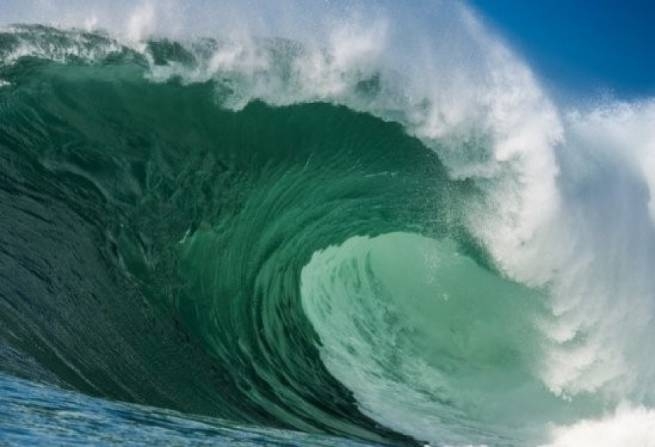The latest study shows that climate change could lead to deadly tsunamis in the Southern Ocean*. They may be caused by underwater landslides in Antarctica.
About this, referring to published in the journal Nature Communications, a study by British scientists, tells space. They found that during previous periods of global warming – 3 million and 15 million years ago – sedimentary layers of rocks formed and slid down in Antarctica. They caused huge tsunamis that reached the shores of South America, New Zealand and Southeast Asia.
Based on the fact that the oceans are warming due to climate change, the researchers concluded that there is a very real possibility that these tsunamis could occur again. Jenny Gales, Lecturer in the Department of Hydrography and Ocean Research at the University of Plymouth in the UK, says:
“Underwater landslides are a serious geohazard that can trigger tsunamis, which can lead to huge human losses.”
Scientists first found evidence of ancient landslides off Antarctica in 2017 in the eastern Ross Sea**. Beneath the landslides are layers of sediment filled with fossilized sea creatures known as phytoplankton.
A year later, in 2018, the researchers returned to the area and drilled deep into the seafloor to extract sedimentary cores — long, thin cylinders of the earth’s crust that show layer upon layer of the region’s geological history.
They learned that the layers of sediment formed over two periods: one about 3 million years ago during the mid-Pliocene warm period, and the second about 15 million years ago, also during a warming climate.
During these eras, the waters around Antarctica were 3 degrees warmer than they are today, leading to outbreaks of algae blooms that, after dying off, filled the seafloor with rich and slippery sediment, leading to landslides. Robert McKay, director of the Antarctic Research Center at Queen Victoria University, says:
“During subsequent cold climates and ice ages, these slippery layers were overlain by thick layers of coarse gravel carried by glaciers and icebergs.”
However, the exact cause of past underwater landslides in the region is unknown, but the researchers found the most likely cause: the melting of the glacier due to climate warming. It was these landslides that led to earthquakes, and those, in turn, caused other landslides, which resulted in tsunamis.
The scale and size of the ocean waves of those periods is unknown, but scientists note two relatively recent underwater landslides that caused huge tsunamis with human losses. This is the Grand Banks tsunami of 1929, which caused waves 13 meters high and killed about 28 people off the Canadian coast of Newfoundland. And the tsunami in Papua New Guinea in 1998, which claimed 2,200 lives.
As many layers of sediment are buried under the seafloor in Antarctica and land-top glaciers are slowly melting, researchers warn that upcoming landslides and tsunamis could be repeated.
* The Southern Ocean is the name of the totality of the southern parts of the Pacific, Atlantic and Indian oceans surrounding Antarctica and often distinguished as the fifth ocean, which, however, does not have a northern border clearly defined by islands and continents.
** The Ross Sea is a marginal sea of the Pacific sector of the Southern Ocean, off the coast of the Victoria and Mary Byrd Lands, between Capes Adare and Colbeck. The International Date Line runs across the sea.







More Stories
D. Sariyannis: “We expect African dust in mid-May”
"Mosquitoes" diseases are spreading across Europe and have reached Crimea
Orange sky…